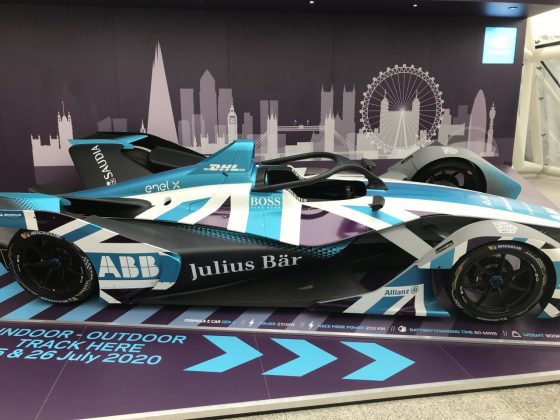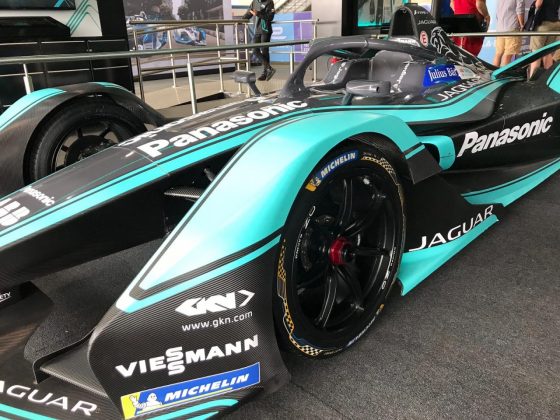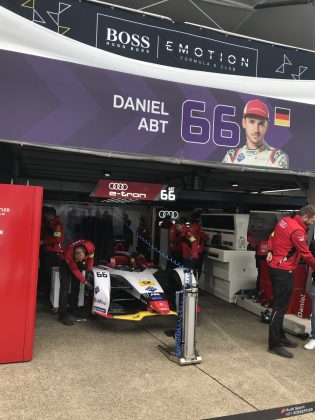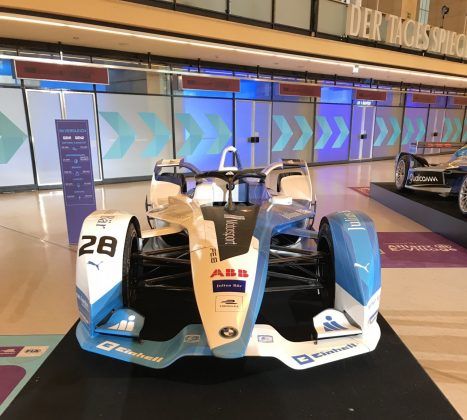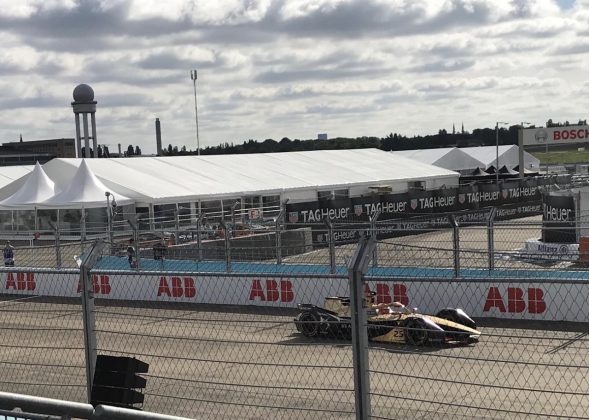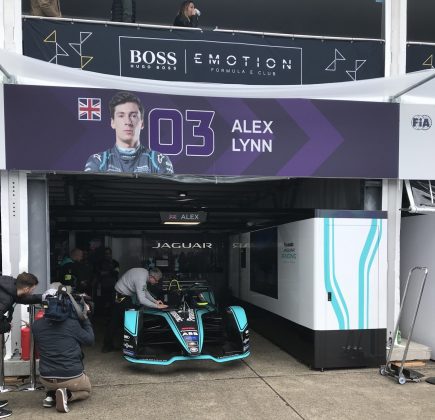Formula E is returning to London in 2020 for the finale of season six, but despite it being one of the fastest growing racing series, many people do not know what it is.
This is an all you need to know guide to Formula E ahead of its return to London.
Season Finale In London
The capital has not held a race in the all-electric race series since 2016 when the races took place around Battersea Park.
The season finale will take place on 25th and 26th July 2020, just down the road at the ExCel Centre located in London Docklands.

The 2.4km track will take the racing along the waterfront and in through the ExCel. Due to the cars being electric they create no emissions which creates the unique experience of racing a portion of the track inside.

London will be a home race for five of the drivers competing this season; Alexander Sims, Sam Bird, Oliver Turvey, Oliver Rowland and James Calado.
If the championship goes down to the last race as seen in season five, London will be treated to some very close head-to-head racing.
What Is Formula E?
Formula E is a racing series that uses only electric cars. Since it’s inaugural season in 2014 there has been five seasons.

Racing does not take place on traditional race tracks, instead they race around temporary street circuits around city-centres across the world. It is branded as “the closest, most intense racing series on the planet.”
The reason behind the series being created was to help find a solution and work towards improving the air quality of cities in the fight against climate change.
Current world champion Jean-Éric Vergne is the only driver to have won the title twice and back to back.
How Is It Different To Formula One?
A common misconception is that Formula E is just an electric version of Formula One.
There are a few big differences:
- Formula E only takes place on street circuits in cities
- Racing is much closer and dramatic as drivers have to conserve tyres and energy as there are no pit stops
- It is more interactive for fans with features such as fan boost
- Practice, qualifying and the race all take place in one day
The Cars
The start of last season saw the introduction of a new generation of electric race car.
The energy storage capacity was increased meaning the cars would not need to make a pit stop mid race to swap into a new car with a full battery; they can now endure a full-race run.
The Gen2 car can reach speeds of 280km/h and can go from 0-100km/h in 2.8 seconds. It only takes an hour for the car’s battery to be fully charged.
All cars have 250kW of power and race mode power can range from 200kW to 250kW.
Due to the cars not having a motor engine they have their own distinctive sound which is noticeably quieter than normal racing cars.
Listen out of the distinctive sound of the cars in this video:
The Format
As all the action gets packed into one day there is a lot to take in during a race day. Each round includes two practice sessions, qualifying including super pole and then the race itself.
The morning sees the two practice sessions take place. The first being 45 minutes long and the second 30 minutes.
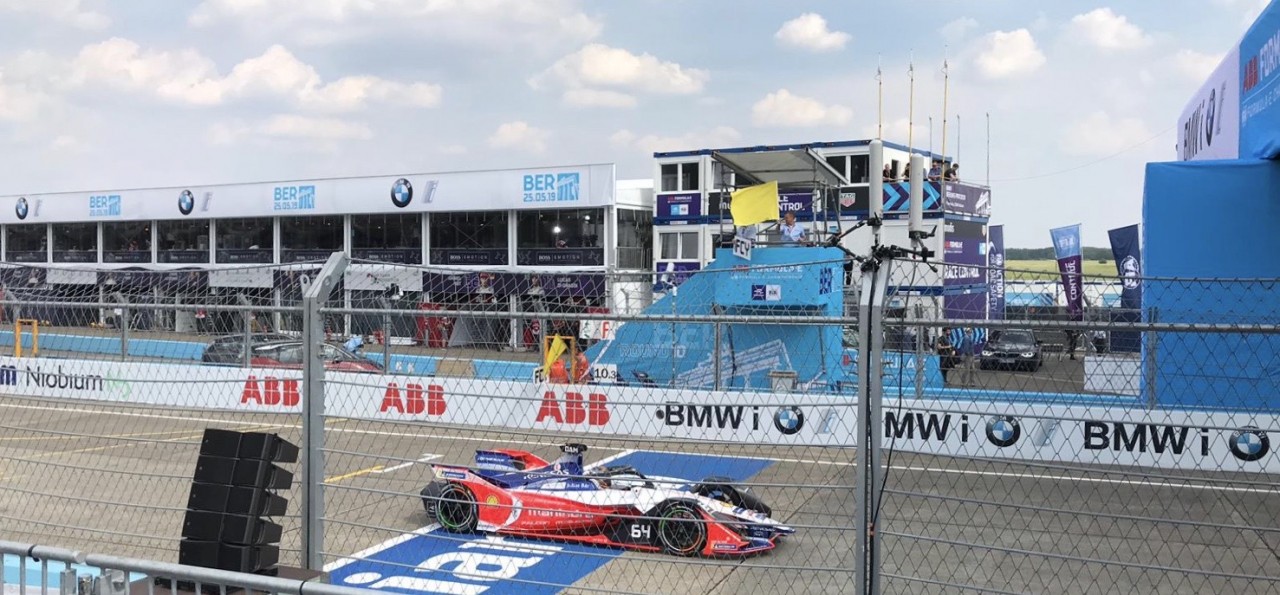
Practice is followed by qualifying. Season five saw the introduction of a new qualifying system.
The drivers are split into small groups of up to six cars based on their positions in the championship.
Group One is made up of the top five drivers in the championship and they are the first group to go out on track, supposedly when the track is in its “worst condition” and trickier to set fast times.
As the rest of the groups go out, the further down the championship you are the cleaner the track will get meaning it will be easier to set a quick time.
The six quickest drivers after each driver has set a time will go through to superpole.
Superpole is a one lap shoot-out to determine the top six on the grid and who gets to start from pole position.
This system was created to make the starting grid different each race to get different drivers standing on the podium, therefore creating a tighter championship battle.
The format of the race is 45 minutes of racing plus one lap when the time is up. The drivers have to be careful to conserve their energy as there is not a set number of laps, this is another aspect that causes dramatic results and added entertainment for fans.
Within a race drivers are allowed to use attack mode and are possibly granted a fan boost.

Attack Mode And Fan Boost
In an attempt to make the racing more interactive for fans ‘Fanboost’ was introduced.
Across social media platforms fans are able to vote for their favourite driver to be given extra power during a race. Fanboost is open six days prior to a race until 15 minutes into a race.
During the second half of the race the five drivers with the most votes are granted an extra power boost which can be used in a five second window.
Attack Mode is available for all drivers throughout each race. When drivers pass through the designated activation zone in the track they will receive an extra 25kW of power. They can use this for a few laps to gain an advantage.
The use of attack mode can be very strategic however the specific details of it including how many times it can be activated in a race are only announced an hour before the race.
Now you know the basics of Formula E, make sure to catch it in London next summer.

